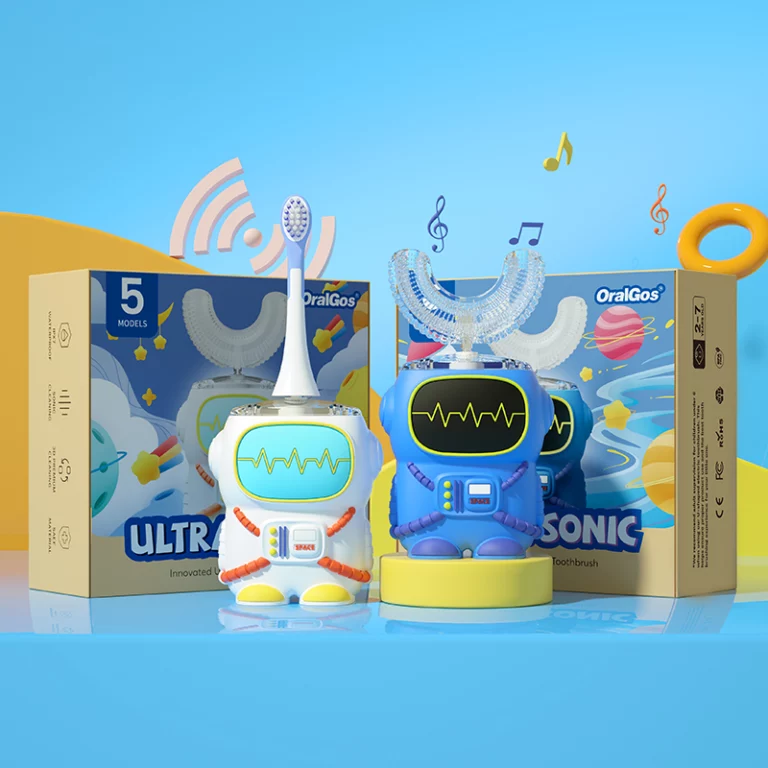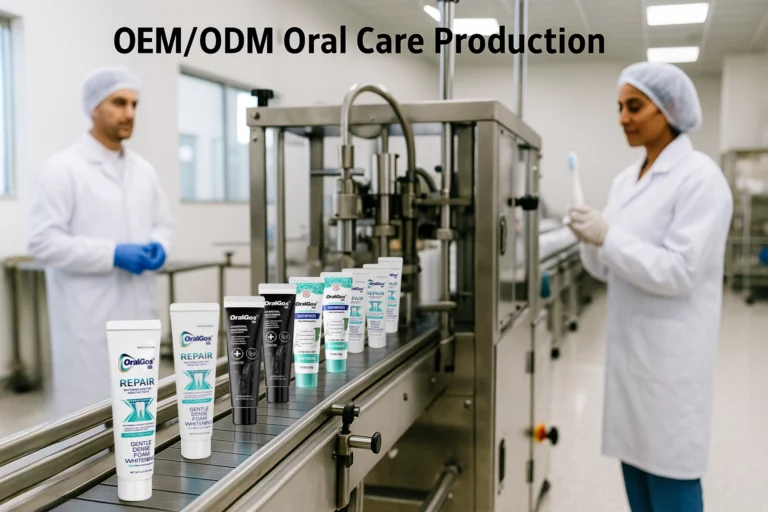In the oral care industry, competition is fierce. Quality control is not just a step in the process—it is a promise to earn consumer trust, meet regulations, and protect your brand. Procurement managers need to understand quality control in oral care manufacturing to choose the right OEM partner. A strong quality management system (QMS) makes sure every toothbrush, toothpaste, or mouthwash is safe and performs consistently.
This article shows how top manufacturers ensure quality and keep production consistent. It also shares real inspection cases that prove the results.

1. Why Quality Control Is Non-Negotiable in Oral Care OEM
Oral care products affect consumers’ health directly, so defects or contamination can cause serious safety risks. Procurement managers face heightened scrutiny when choosing an oral care OEM because:
- Regulatory requirements vary by market (FDA, ISO, CE, GMP).
- Brand image is tied to consistent quality and safety.
- Product recalls are costly and damage market credibility.
In short, a lack of effective quality control jeopardizes both consumer well-being and commercial success.

2. Building a Quality Management System (QMS) for Oral Care Manufacturing
An effective QMS is the backbone of any quality control oral care OEM operation. Top factories follow international standards like ISO 13485 for medical devices or ISO 9001 for quality management. They adapt these standards to meet the specific needs of oral care products.
Key elements of a QMS in oral care manufacturing include:
a. Raw Material Verification
Every batch of bristles, polymers, flavoring agents, or active ingredients undergoes chemical and microbiological testing before acceptance into production. For example, toothbrush filaments are tested for BPA-free compliance, while toothpaste actives are screened for purity.
b. Standard Operating Procedures (SOPs)

(Learn more about our factory capabilities here).
Standard Operating Procedures (SOPs) clearly outline every step, from molding toothbrush handles to filling toothpaste tubes. This helps ensure consistent quality across different shifts and batches.
c. In-Process Quality Checks
Automated vision systems inspect toothbrush head tufting patterns, while viscosity and pH tests are performed on toothpaste during filling. This prevents defects from reaching final packaging.
d. Traceability Systems
Batch codes, QR codes, or RFID tags help trace each product back to its raw materials and production date. This is vital for audits and recalls.
3. Standard Factory Workflow for Quality Control
While different oral care OEM factories may use varying technologies, a typical quality control workflow includes:
- Incoming Material Inspection – Raw materials are checked for compliance against supplier COAs (Certificates of Analysis) and internal standards.
- Pre-Production Trial Runs – Small batches are produced to validate equipment setup and process stability.
- In-Line Monitoring – Real-time sensors check key points like bristle firmness. Human inspectors also monitor important steps, such as sealing toothpaste tubes.
- Post-Production Testing – Random samples are pulled for functional, microbiological, and packaging integrity testing.
- Final Audit & Certification – Products are released only after passing internal quality checks. When needed, they also go through third-party lab testing.
This systematic approach reduces variability, lowers defect rates, and ensures consistent compliance.

4. Quality Control Case Study: Detecting and Resolving Bristle Shedding in Toothbrushes
To illustrate how a robust quality control oral care OEM system works in practice, consider this real-world scenario:
The Challenge:
During an in-process check, inspectors noticed an abnormal bristle shedding rate on a new toothbrush model. While still within legal tolerance, the rate exceeded the brand’s internal quality benchmark.
The Investigation:
- Step 1: Affected batches were isolated immediately.
- Step 2: Tufting machine calibration records were reviewed, revealing a slight deviation in the heat-fusion temperature setting.
- Step 3: The SOP was updated to include additional temperature verification before each shift change.
The Outcome:
All affected units were fixed before shipping. The improved process cut bristle shedding complaints by 30% in the next quarter.
This example demonstrates how active monitoring, swift problem-solving, and procedural updates protect both product quality and brand reputation.
5. Collaboration Between OEM and Buyer for Continuous Improvement
Procurement managers should view quality control as a shared responsibility with their OEM partner. The most successful relationships include:
- Joint Quality Audits: Conducted annually or bi-annually to verify QMS adherence.
- Custom Specifications: OEMs adapt SOPs to meet the buyer’s unique quality thresholds.
- Feedback Loops: Consumer complaints and market returns are analyzed together to refine processes.
- Innovation Trials: Testing new materials or packaging methods under strict QC protocols before mass production.
(Explore our OEM service solutions here).
6. How to Choose a Quality-Focused Oral Care OEM
When evaluating an OEM partner, procurement managers should look beyond certifications and consider:
- Audit Transparency: Will the factory provide unfiltered access to production lines and QC records?
- Third-Party Testing: Does the OEM routinely work with accredited labs for independent verification?
- On-Time Compliance: Are production schedules realistic without compromising quality checks?
- Continuous Training: Are QC staff regularly trained in the latest inspection and testing methods?
A factory that consistently demonstrates these qualities is far more likely to protect your brand’s reputation.
7. Final Thoughts: Quality as a Competitive Advantage
Quality control in oral care OEM manufacturing does more than prevent problems. It helps build trust and confidence in the market. Procurement managers who prioritize quality in their supplier relationships gain more than compliance; they gain long-term consumer loyalty.
A strong quality management system and clear production steps help manufacturers keep products safe and reliable. They also fix problems fast by learning from real examples.
If you’re looking for a reliable OEM partner with strong technical skills and strict quality control, we’re here to help. Contact us to see how we can bring your next oral care product to market with confidence.





